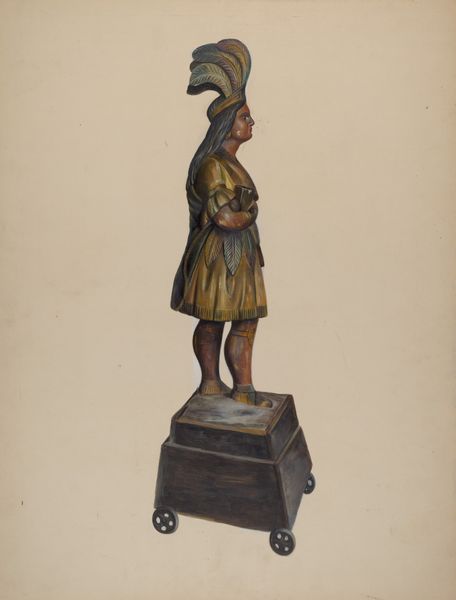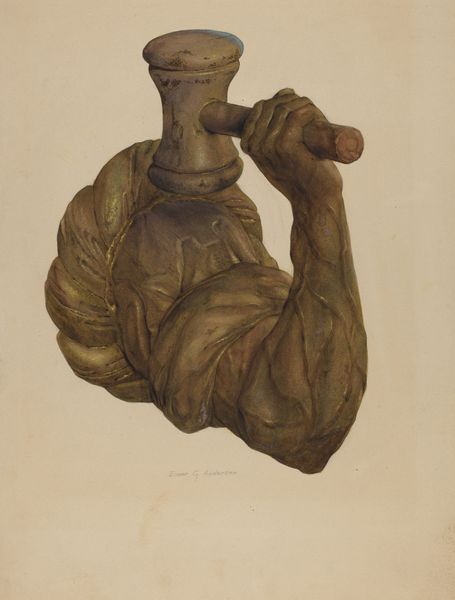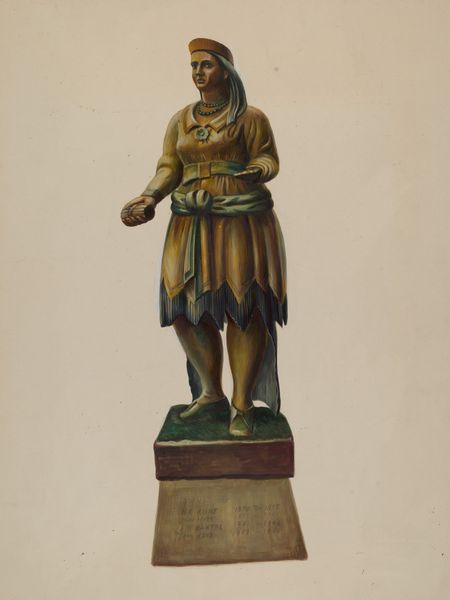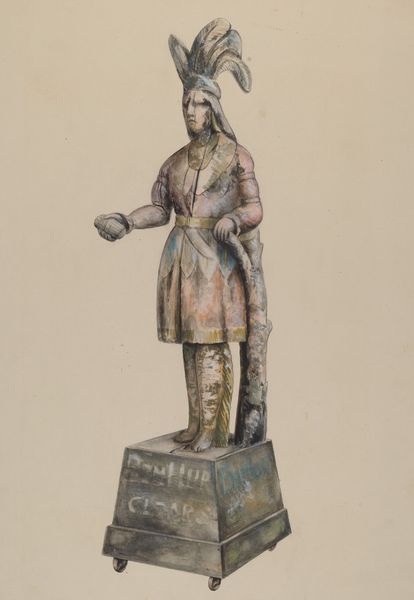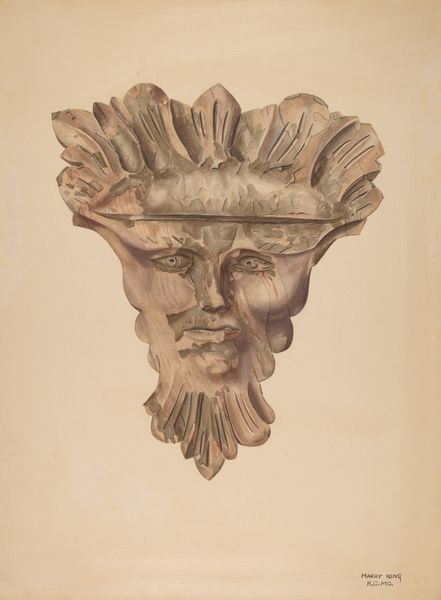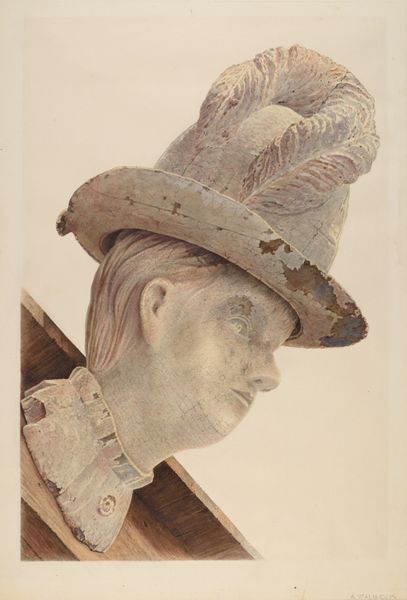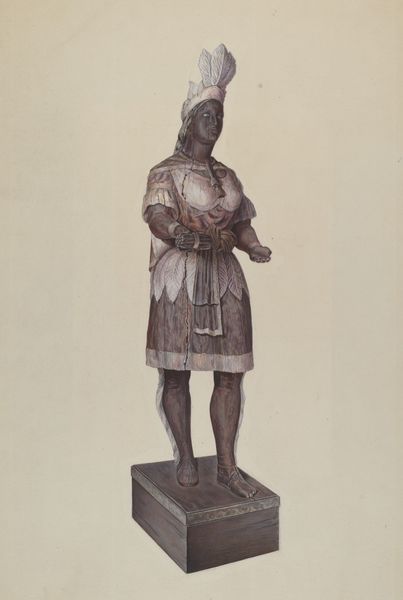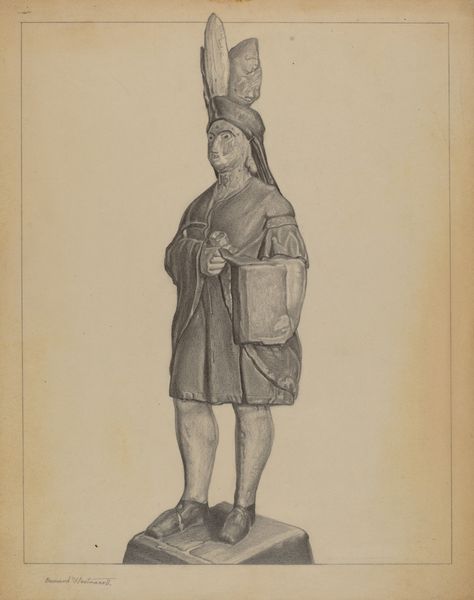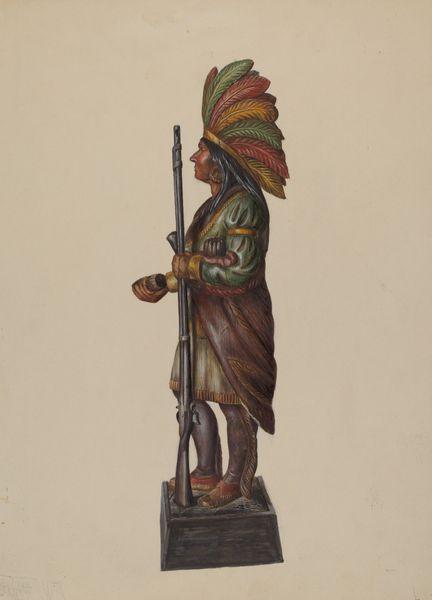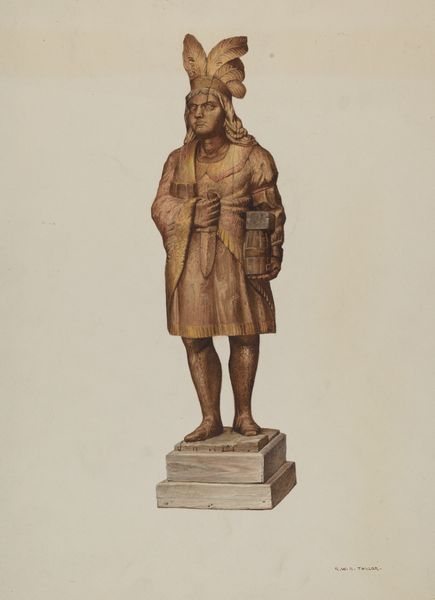
drawing, mixed-media, paper, pencil
#
portrait
#
drawing
#
mixed-media
#
charcoal drawing
#
figuration
#
paper
#
ancient-mediterranean
#
pencil
#
portrait drawing
#
academic-art
#
portrait art
Dimensions: overall: 60.4 x 44.3 cm (23 3/4 x 17 7/16 in.)
Copyright: National Gallery of Art: CC0 1.0
Curator: This drawing, titled "Head from a Statue: Minerva," was created sometime between 1935 and 1942. The artist used a mixed media approach, combining pencil, charcoal, and other mediums on paper. Editor: It strikes me as serene, even melancholic. The shading gives it a monumental feel despite being a drawing on paper. The figure's closed eyes lend an air of introspective vulnerability. Curator: Considering Minerva's associations with wisdom and strategic warfare, I see that tranquility too, but perhaps as reflective strength rather than weakness. It also gives us the chance to think about the archetype of the warrior in this way. Editor: Absolutely, but there's something undeniably softened here. Those laurel leaves atop the helmet, for instance – they hint at victory but are rendered with a gentle, almost sorrowful curve. It really invites a nuanced read of what victory signifies. Curator: Think about the 1930s and 40s, the era in which this work was created, and one could argue that they were a turbulent moment defined by world wars and pervasive social strife, and consider that context and then, the piece reflects an underlying plea for peace. Editor: I agree, knowing that timeframe infuses it with added depth. The classic image of Minerva as a symbol of victory is undeniable. However, her calm presence amidst the darkening tones transcends straightforward celebration and asks if war is even a victory. Curator: What’s especially fascinating is how this particular artistic decision pushes beyond rigid binaries associated with gender and power, suggesting a paradigm of thoughtful leadership in opposition to destructive force, one rooted in complex humanity rather than abstract strength. Editor: I’m struck by how the artist employed shadow not just to sculpt form, but to evoke layered feeling. You have opened me to ideas of how to represent classical power that go way beyond triumph to deeper consideration of legacy and the impact of decision-making. Thank you! Curator: It is an artist using accessible mediums of drawing to explore power, gender, and history. Art is, always, meant to teach and challenge, which this piece absolutely manages to do.
Comments
No comments
Be the first to comment and join the conversation on the ultimate creative platform.
